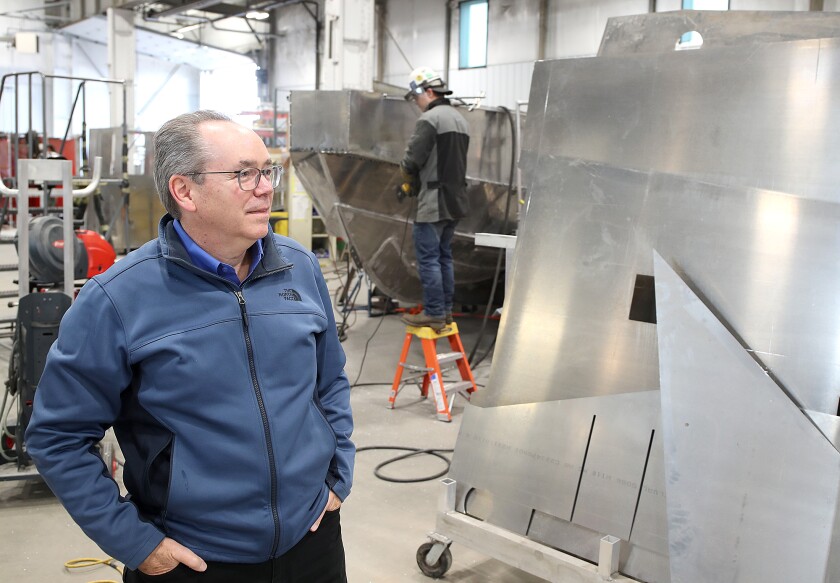Wisconsin’s labor shortage is a major barrier to growing the state’s economy, and worker productivity also lags behind neighboring states, a new report finds.
Wisconsin has had more job openings than people on unemployment since 2021. On average, the state had 93,099 more monthly job openings than job seekers from January 2021 through February 2025, according to a report released this week by the University of Wisconsin-Extension.
State data shows the gulf between openings and people on unemployment has been narrowing for more than a year. In April, there were roughly 26,590 more openings than job seekers.
“A lot of Wisconsin businesses have been struggling with finding employees, and they have been for a number of years, going back to before COVID,” said Steven Deller, a professor of agricultural and applied economics at UW-Madison and one of the report’s authors.
But economic uncertainty around federal trade policy means that trend may not be as pronounced in today’s labor market. The report notes many businesses are in “wait and see” mode, neither hiring nor laying off workers.
A May economic forecast from the Wisconsin Department of Revenue projects that employment in manufacturing and construction will contract in 2025. A recent survey of 208 employers from Wisconsin Manufacturers & Commerce, the state’s largest business lobbyist, found the share of businesses struggling to hire fell to its lowest point since 2014 at 52 percent.
“Many businesses are delaying decisions and investments, including hiring, while a slow economy has more people looking for work,” WMC President Kurt Bauer said in a statement earlier this month.
While the labor market may not be quite as tight in 2025 as in recent years, businesses traditionally try to boost the productivity of their workforce in response to labor shortages.
The UW-Extension report used the state’s real gross domestic product, which is the total value of goods produced and services, as well as employment measures to calculate labor productivity, also called GDP per worker.
ADVERTISEMENT
It found Wisconsin’s GDP per worker has generally lagged behind Illinois, Iowa, Michigan and Minnesota since the mid-2010s — and the average output per worker in the Badger State fell between 2021 and 2023.
To some degree, Deller said Wisconsin’s lag in productivity can be attributed to having a large rural population and a lot of small towns. Businesses in rural areas tend to be smaller with less capital to spend on technology, the report noted.
Dane, Waukesha and Milwaukee counties had the highest rates of GDP per worker in Wisconsin, but all three were below the national average, according to the report.
Another possible factor is the mix of industries in Wisconsin, Deller said. Some industries, like education, retail, health care and food service, are relatively labor-intensive with limited opportunities to use automation or technology to boost productivity, the report notes.
For example, “tourism is really important to a lot of Wisconsin, but by the nature of the industry, you don’t see a high level of labor productivity,” Deller said.
To address those issues, the report says the state could invest in workforce development and technical education, as well as support high-productivity industries like manufacturing and information technology.
Wisconsin could also look to boost labor force participation by addressing barriers that prevent workers from participating in the economy, such as child care or transportation, the report says. Boosting the number of people moving into Wisconsin could also increase the state’s pool of workers.
ADVERTISEMENT
“It’s probably difficult to have expansion on your mind when you can’t fill current jobs,” said McKenzie Boyce, one of the report’s authors and a researcher with the UW–Madison College of Agricultural & Life Sciences. “Even if you could fill all current jobs, where are you going to get your next worker from? (That) is where things like child care, migration and education and training come into play.”
Wisconsin Public Radio can be heard locally on 91.3 KUWS-FM and at wpr.org.
© Copyright 2025 by Wisconsin Public Radio, a service of the Wisconsin Educational Communications Board and the University of Wisconsin-Madison
______________________________________________________
This story was written by one of our partner news agencies. Forum Communications Company uses content from agencies such as Reuters, Kaiser Health News, Tribune News Service and others to provide a wider range of news to our readers. Learn more about the news services FCC uses here.














